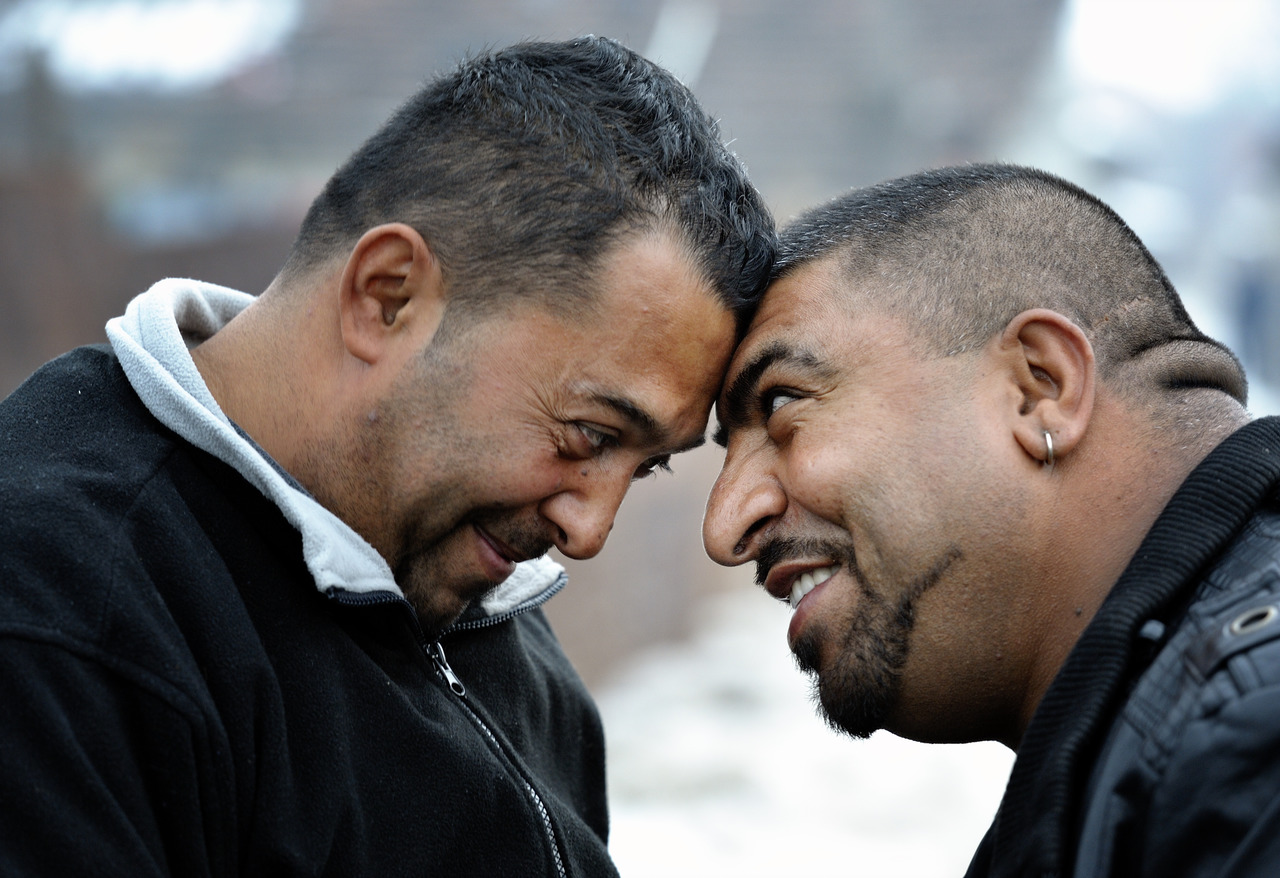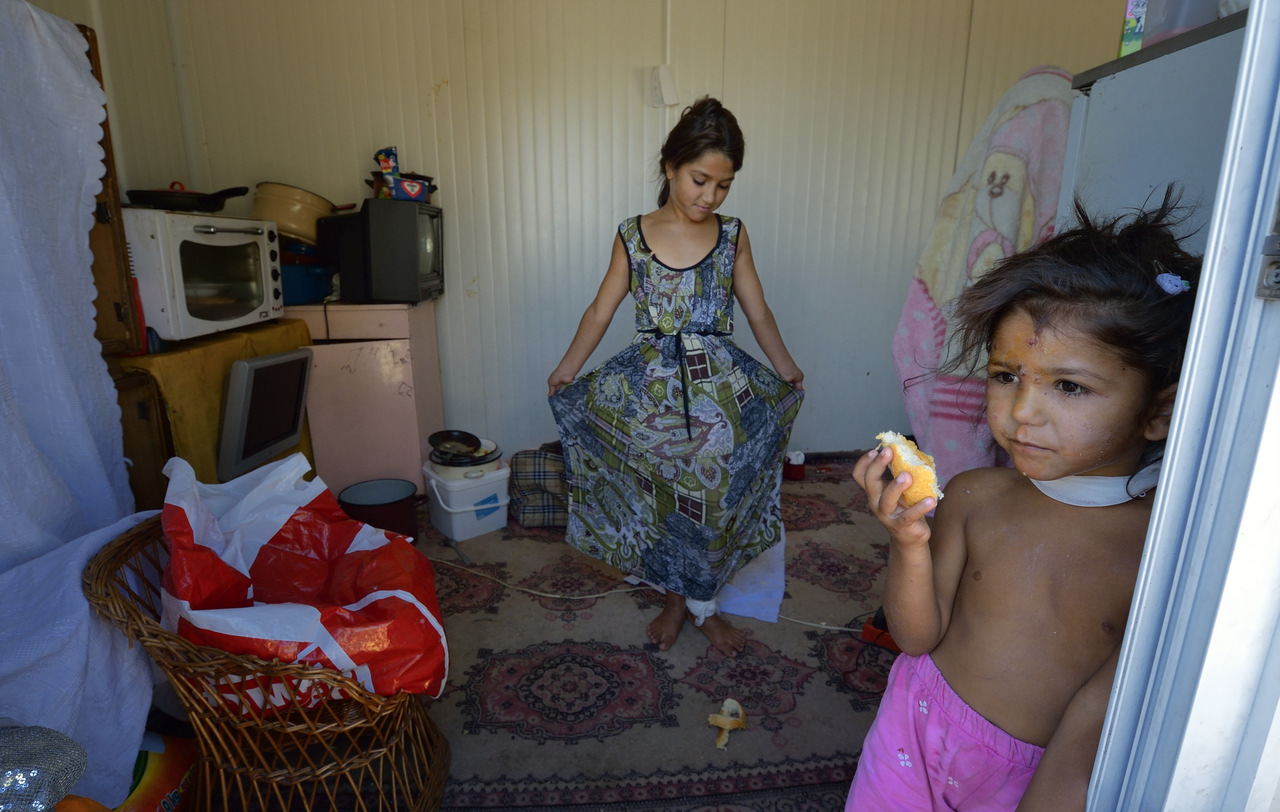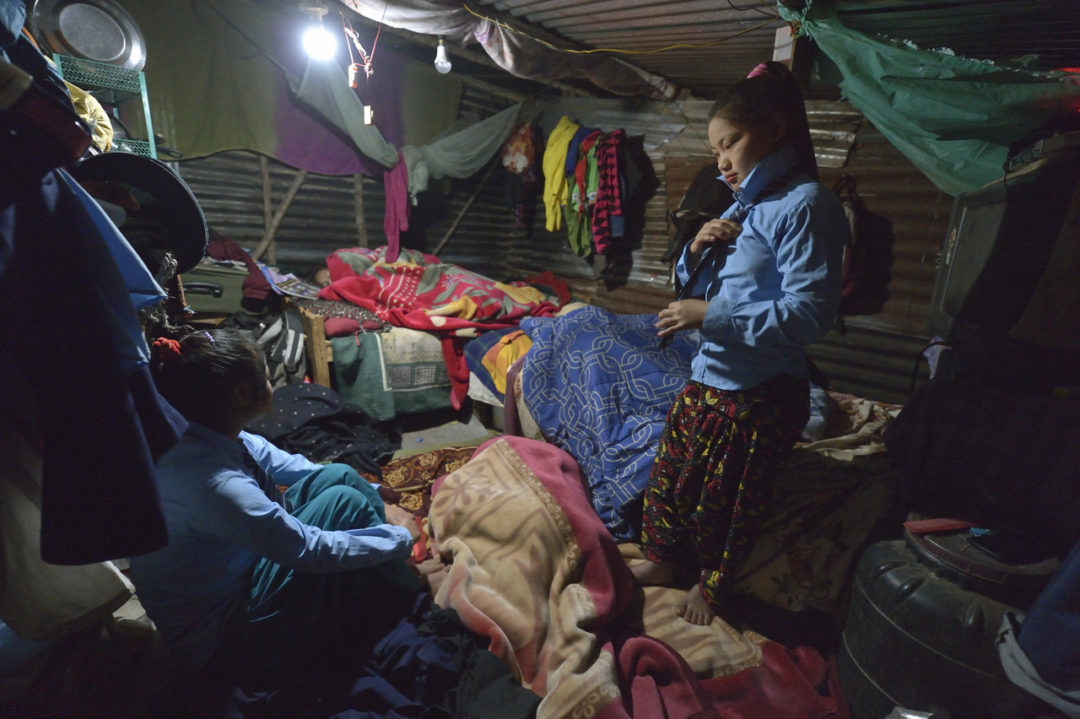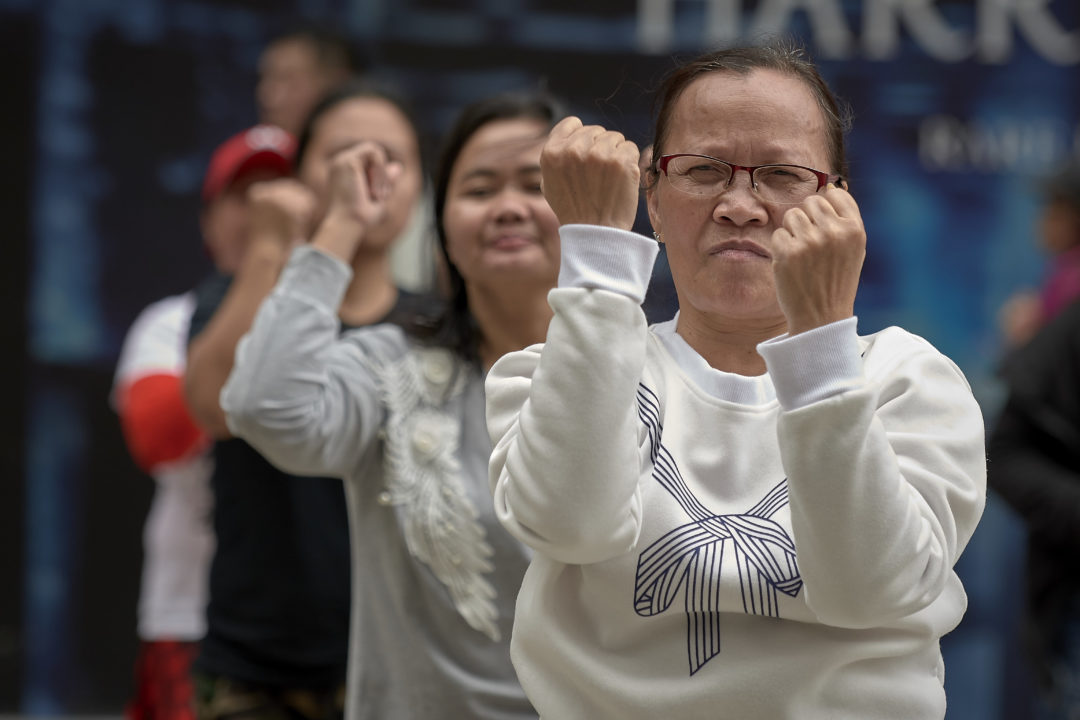As I stepped out of a taxi near a collection of metal shipping containers in Makis, a village outside of Belgrade, Serbia, the people living in the containers eyed me suspiciously. When I set my camera bag on the ground and start assembling my camera gear, a few of the women started shouting, Bezi! Bezi! — “Go away!”
I just knew it was gonna be one of those days.
The folks in the containers were Roma, also known in many parts as Gypsies. They are Europe’s largest minority, and they have good historical reasons to distrust outsiders. Voyeuristic photographers are rightly chased away, violently if need be. But before that could happen to me, Jovana Savic, a Church World Service staff member who had accompanied me, found a woman we’d arranged to meet. She taught in a local Roma school and knew many of the families. When I went and stood by her, people quit yelling at me. But they kept giving me the eye.
Then one of the Roma women remembered me from when I had visited their urban squatter settlement one cold and snowy day seven months earlier. Then another remembered me. Their rejection began to turn to welcome.
I then pulled the pièce de résistance out of my bag: some prints of several images I had captured during that earlier visit. I handed them to the women, and in that instant I went from an unwelcome gadje to an old friend. Some of the women who’d been yelling at me to leave began dragging me to their containers to show me their new home and have me photograph them anew.
I just knew it was gonna be one of those days.
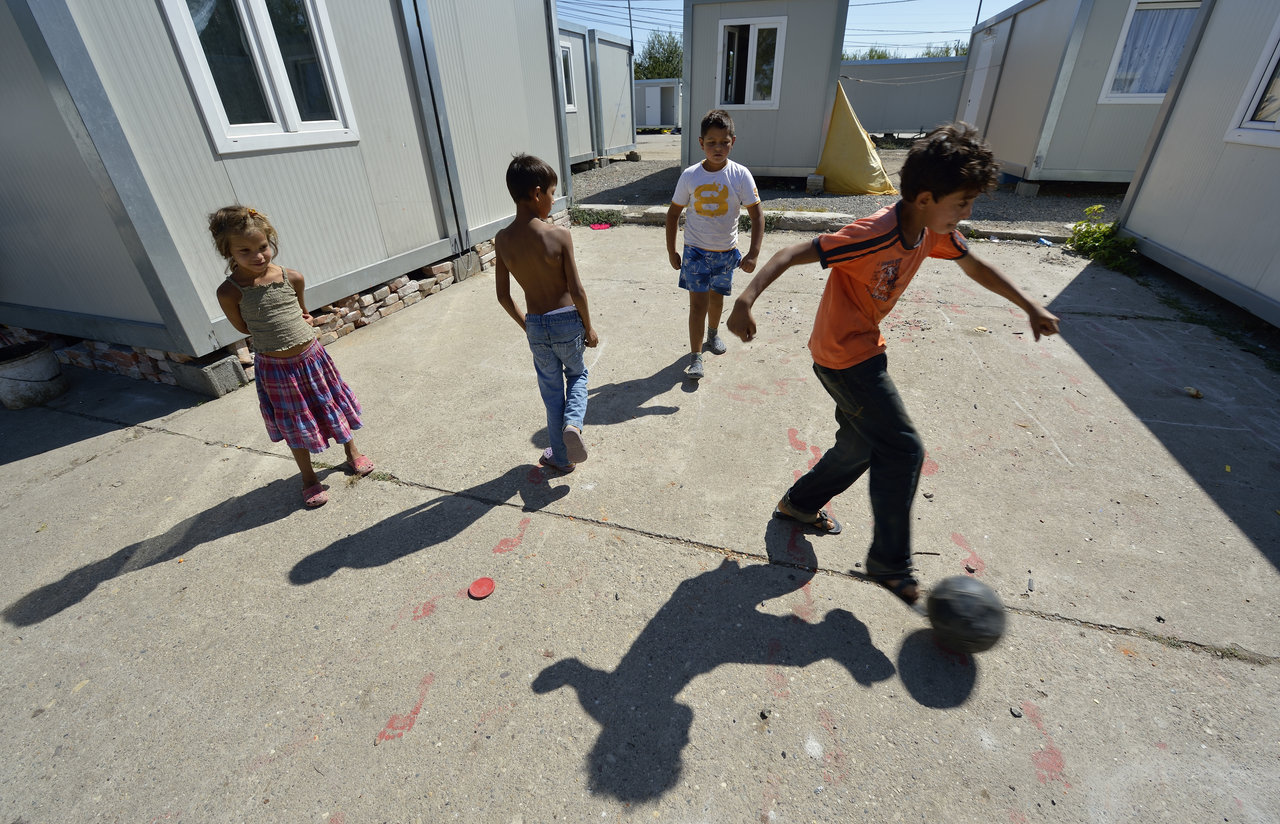
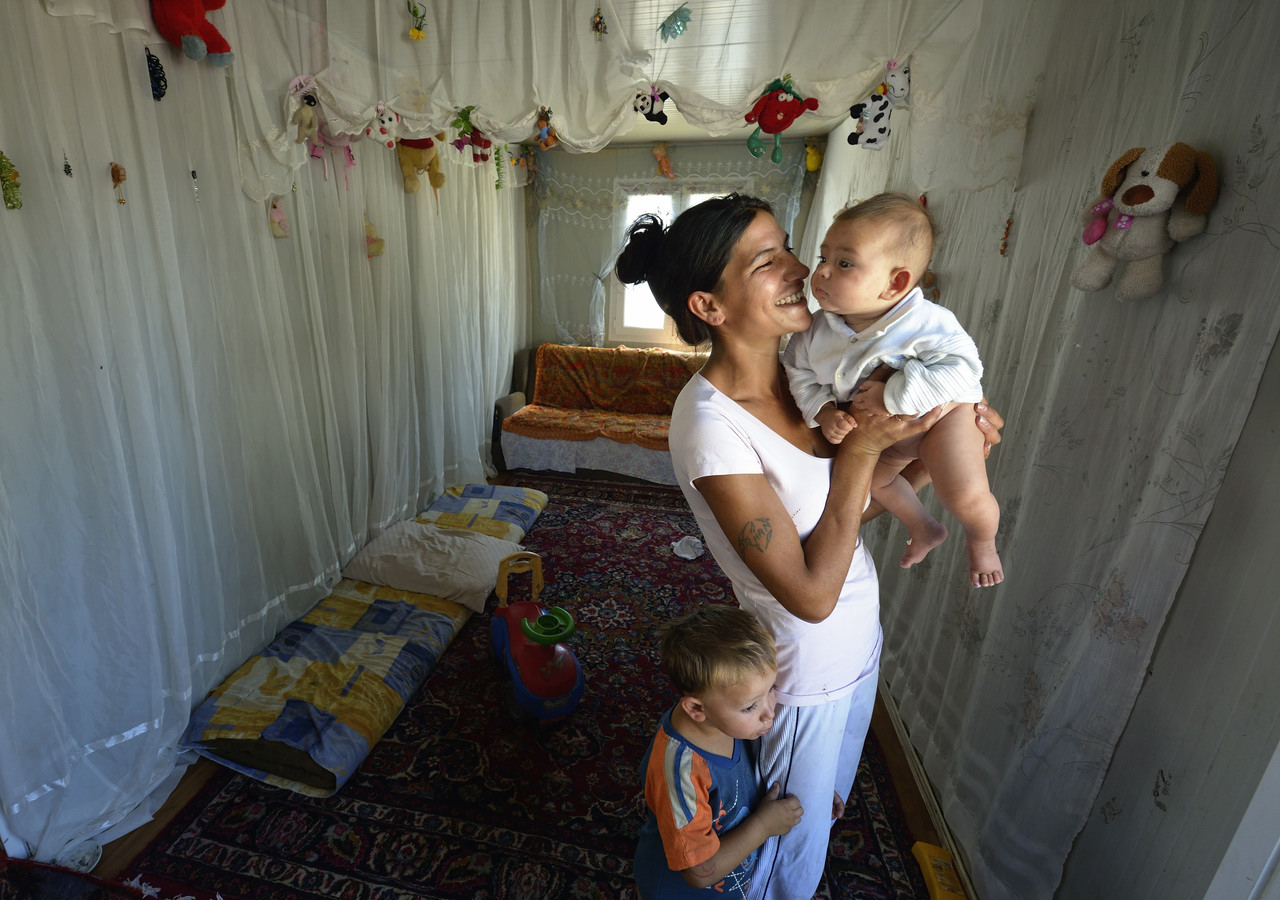
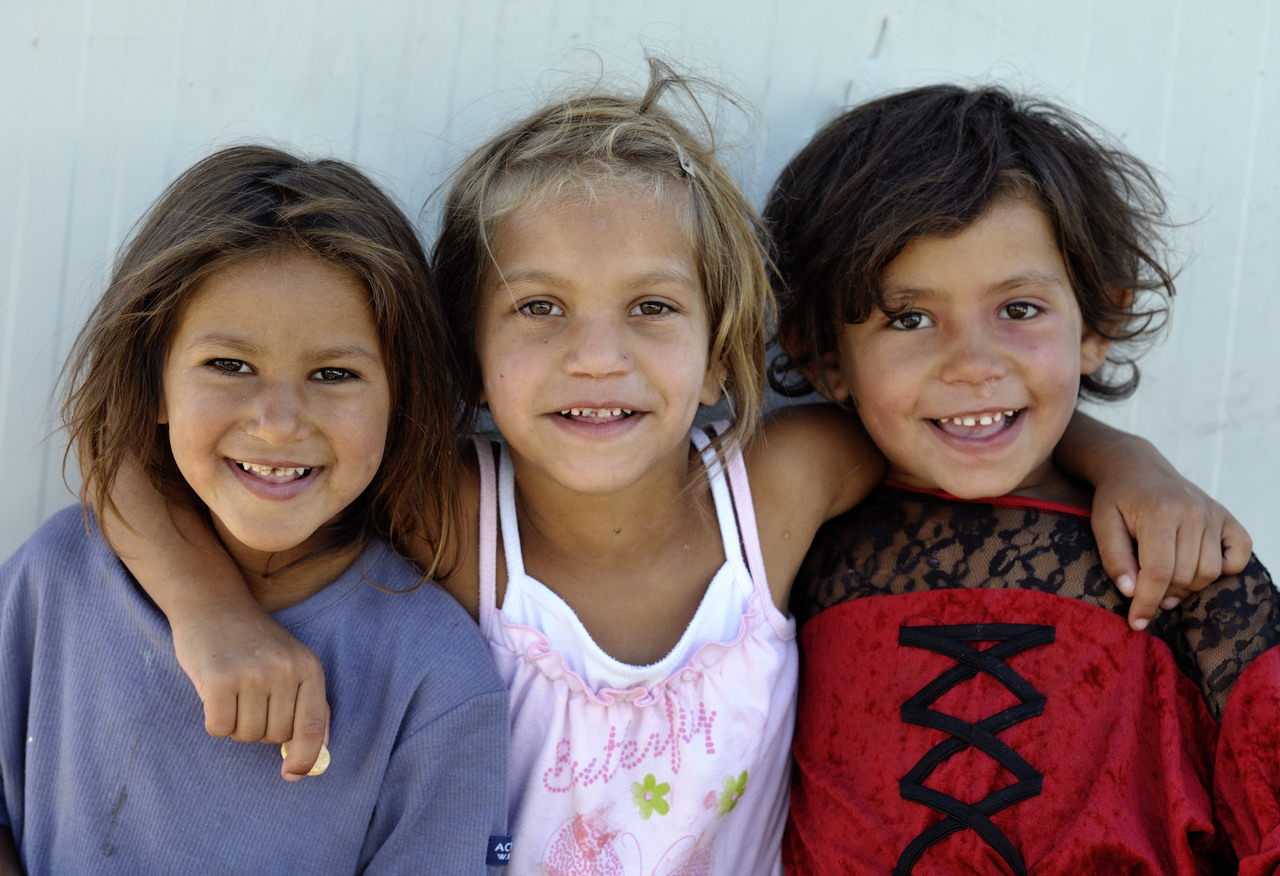
Soon I was sitting drinking coffee inside one of the containers, talking with a family I’d interviewed at length in their old settlement. I’d met Milan Pesic in their prior home, capturing images of him as he practiced with the horn he plays in a Roma band. This photo of his son Boban was one that I’d printed. Here’s an image from their old place, then Boban holding the photo in Makis, then Milan and his wife Gordana in their new container. Notice they took the print and stuck it to the wall of their room with a magnet.
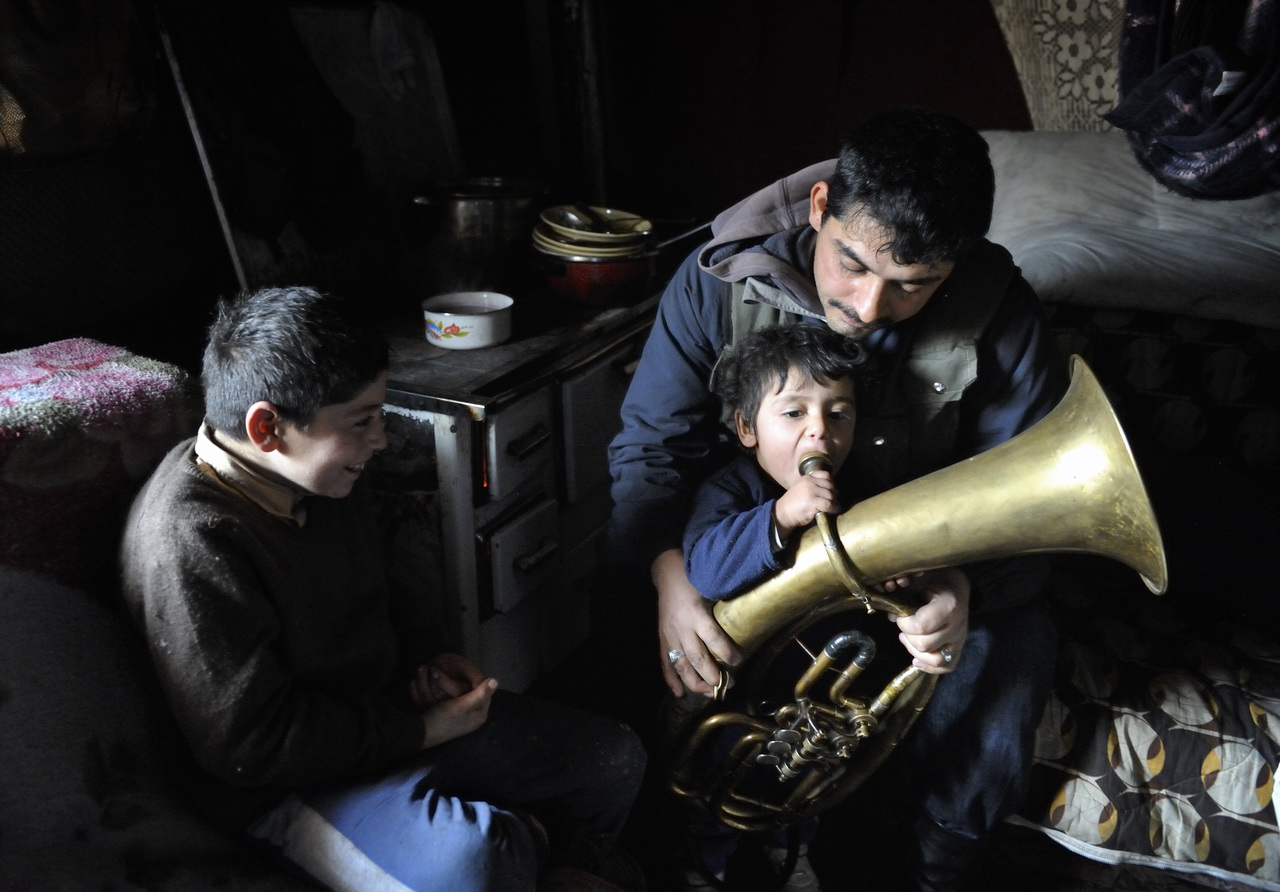
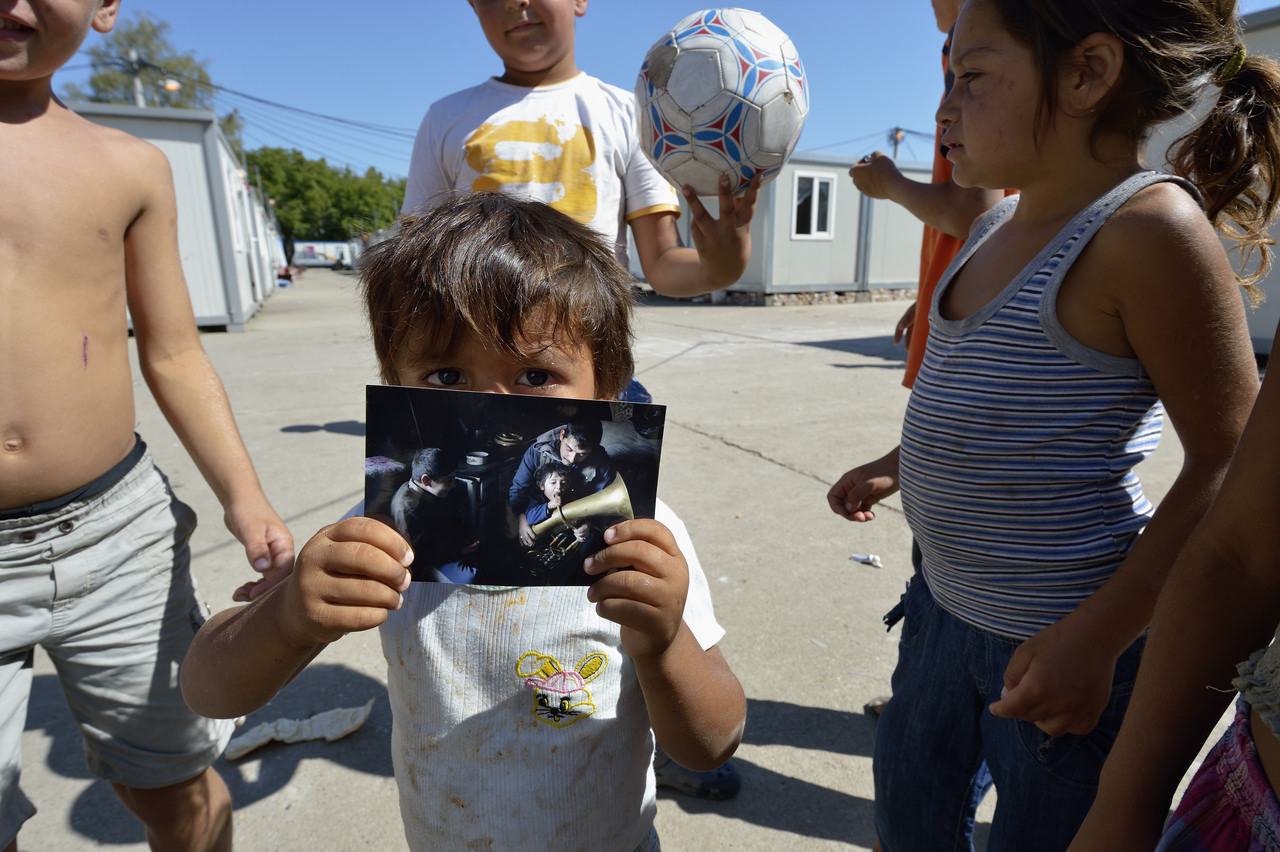
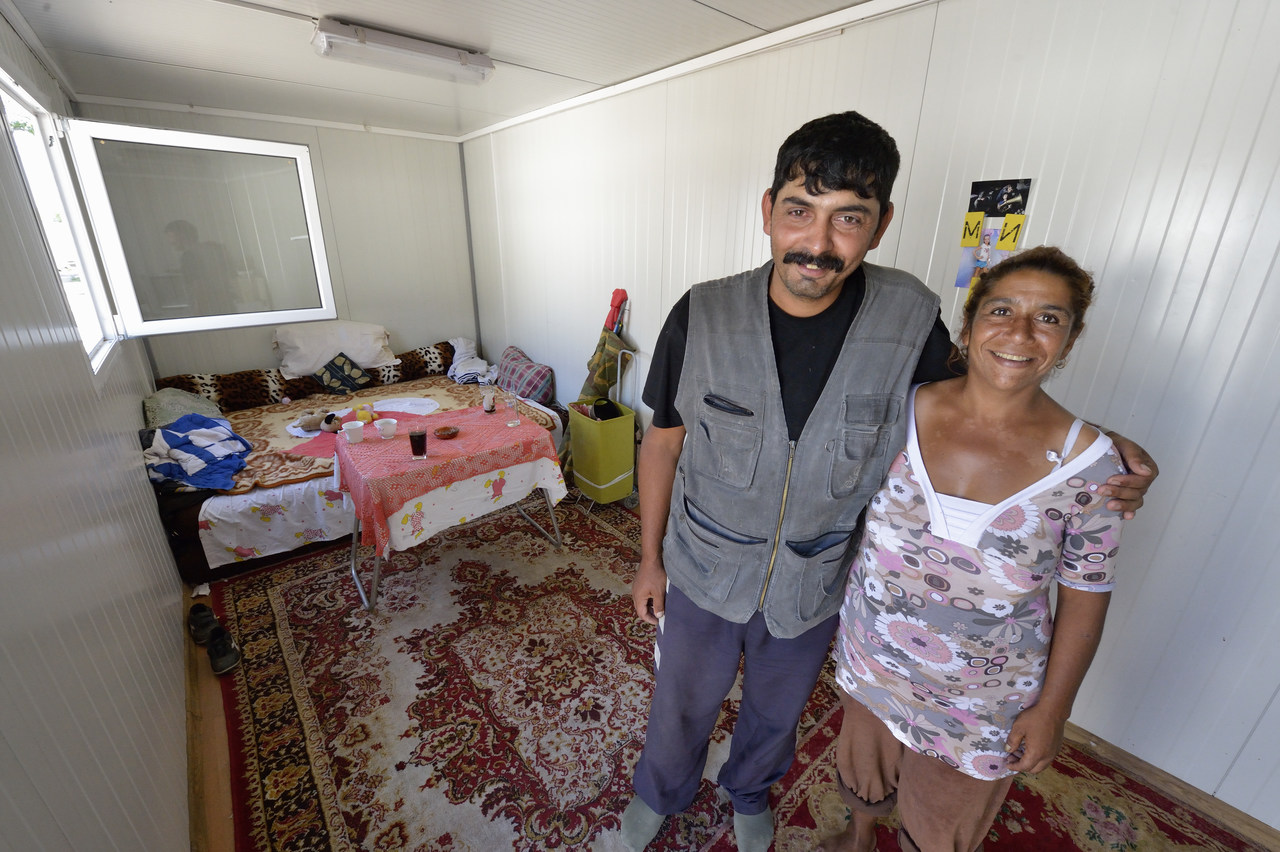
I wove the story of Milan and his family into one of several articles about the Roma that I wrote for response, the magazine of United Methodist Women. The preparation included visiting Roma communities in Serbia, Macedonia, Bulgaria and Germany.
This particular Serbia visit also included a return visit to a preschool in Smederevo that welcomes Roma children. It’s one of several education projects for Roma supported by Church World Service, which runs a classroom in one of the metal containers in Makis.
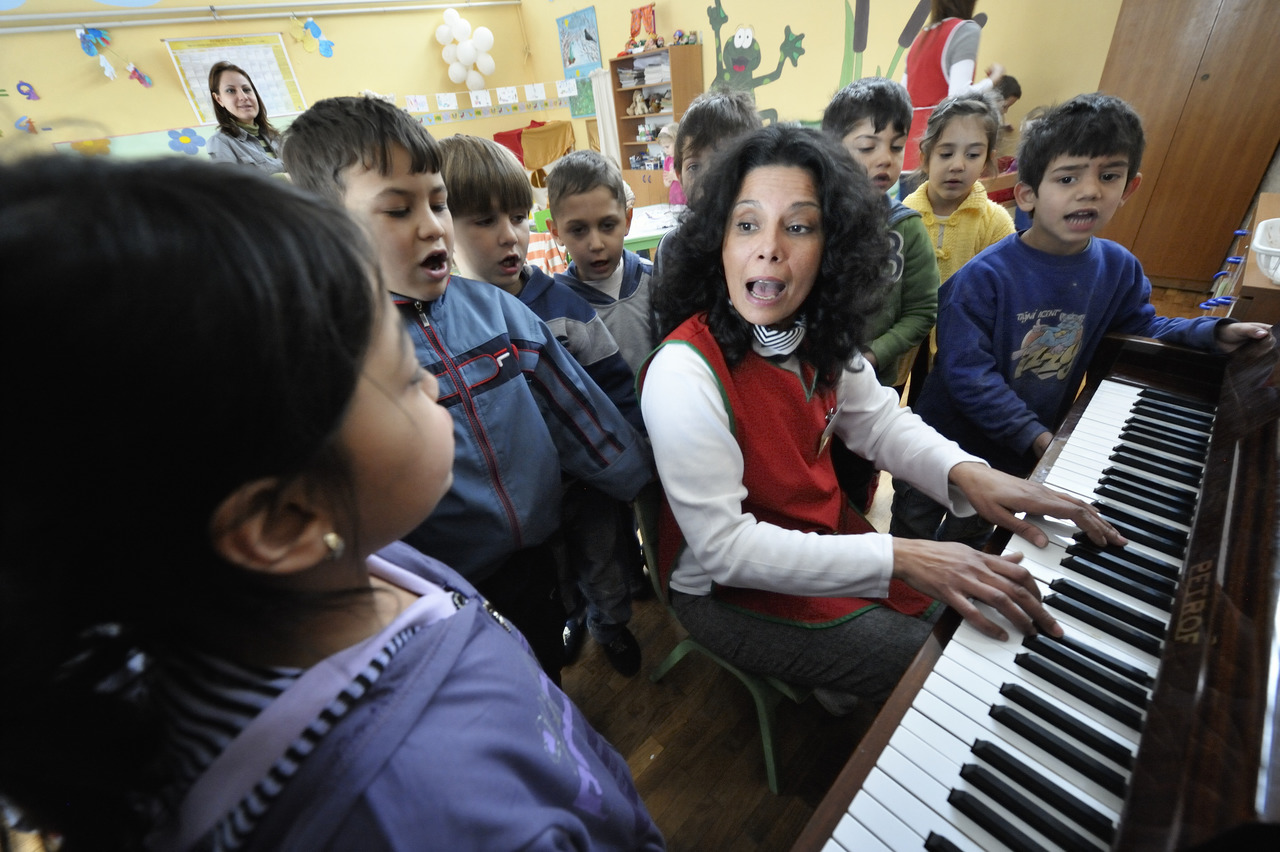
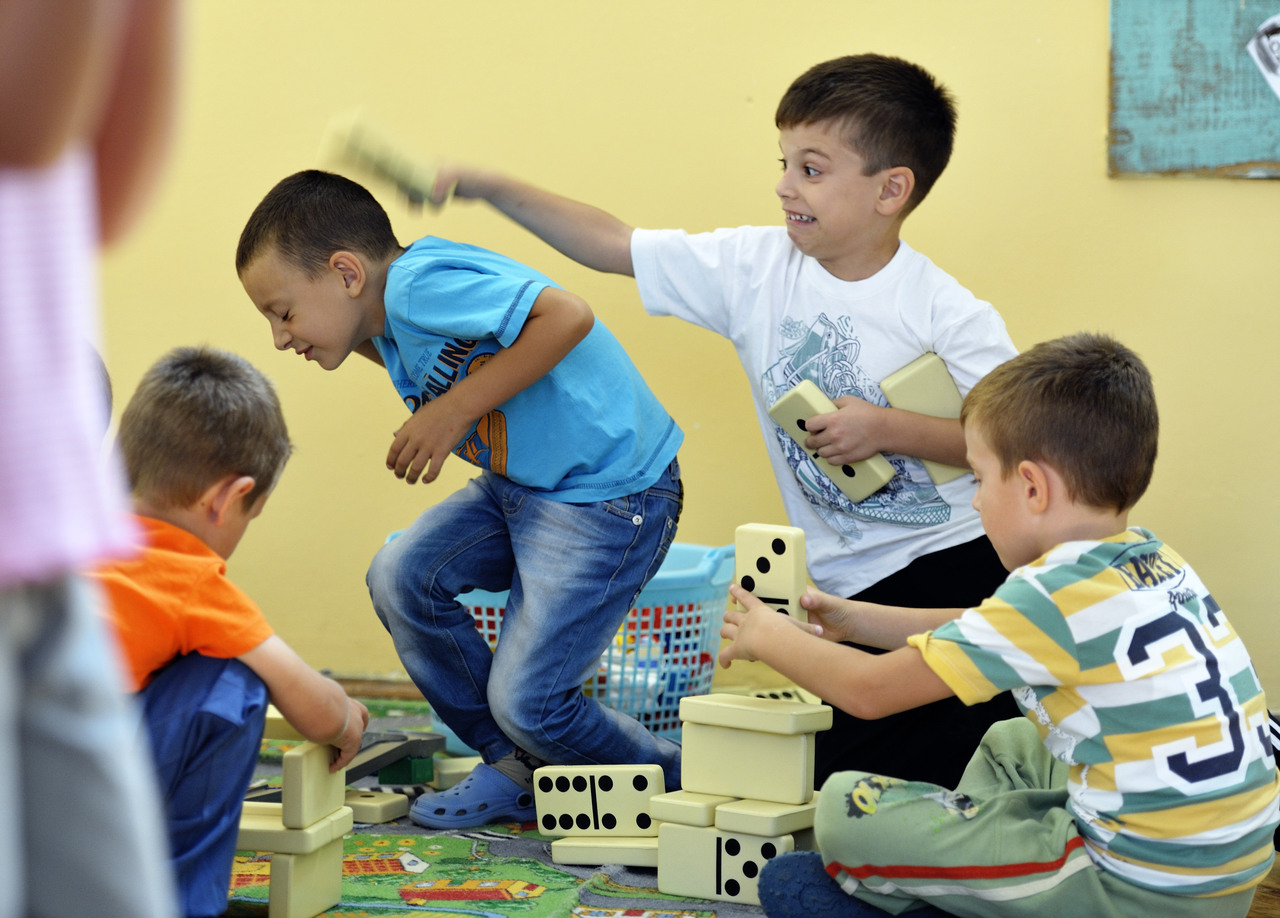
During several months of researching these articles, I often found myself in the grasp of a Roma welcome. For a people so leery of outsiders, they — like the poor everywhere — offer the rest of us a profound gift of hospitality, and for that I’m thankful. Without their collaboration, there was nothing for me to write. I might as well have stayed home and done my research in Wikipedia.
I wouldn’t get much done as a photojournalist, or at least not much that’s worthwhile, if I didn’t have connections that provide me entry into diverse communities. I’m not just a guy with cameras who shows up uninvited, but rather the friend of a friend who is gifted with some initial trust and confidence. The kind of work that Sean and Albin and I have been doing for decades is possible in large part because we’ve collaborated with churches and other organizations that are deeply involved in people’s lives and communities. So when we show up with too simple of questions and too much camera gear, we’re greeted as collaborators, not as outsiders. That’s a sacred trust in many ways, something we take very seriously as we endeavor to return the trust by accurately and faithfully telling people’s stories. Trust and confidence are just as important to good photojournalism as good light.
With that attitude, I traveled to places like Serbia, where I first met people in the Roma squatter community in Belvil, a suburb of Belgrade, where Milan and his family lived when I first met them. I spent several days walking around with a Church World Service collaborator who introduced me to families living there. The more they got used to seeing me around, the more they accepted me.
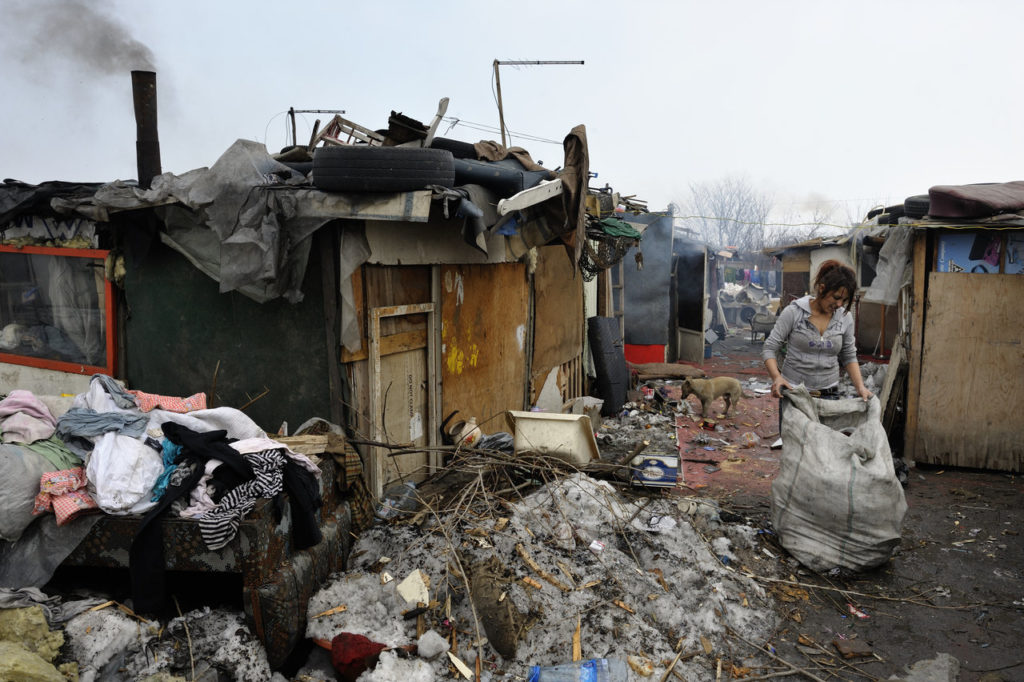
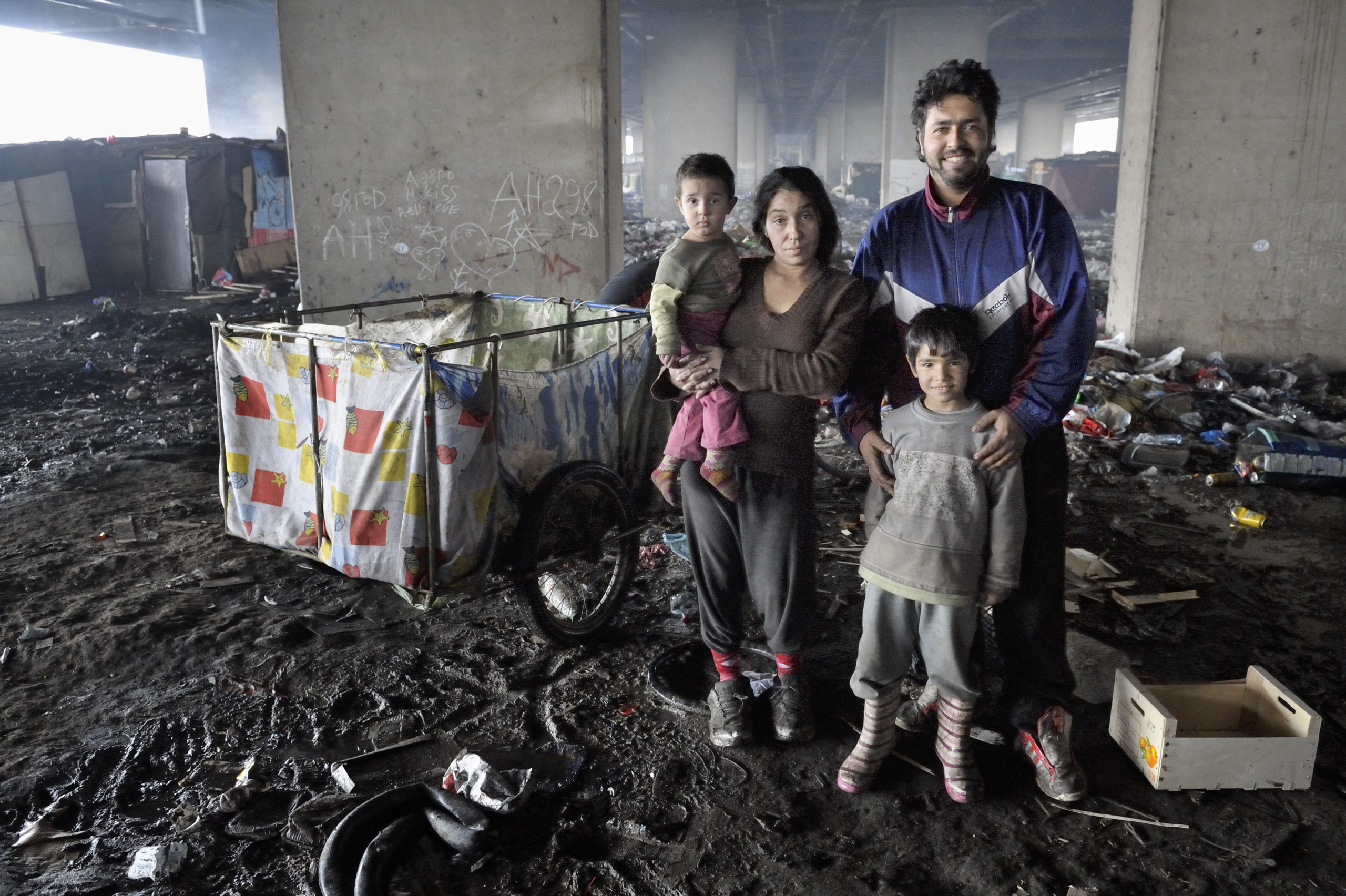
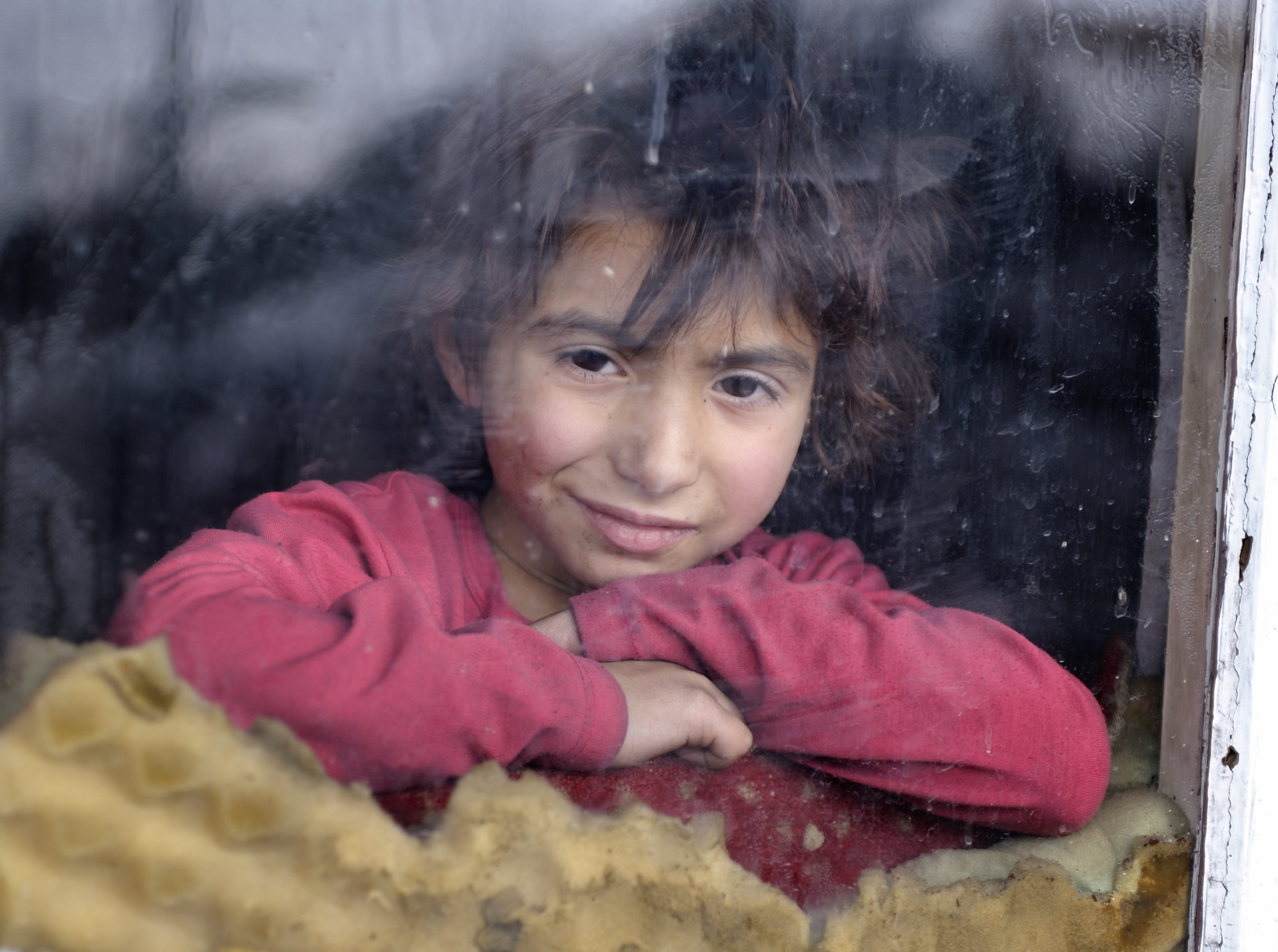
A few weeks after my visit, the thousand or so Roma living in Belvil were forcibly evicted, allegedly because their settlement was an “eyesore” that stood in the way of “progress.” About half of the residents, mostly those with ID documents with Belgrade addresses, were resettled in metal shipping containers outside the city, but they were warned that they could not continue recycling, their most common income-generating activity. The city moved the Roma out of sight, but didn’t allow them a means to sustain themselves.
Most of the remaining Belvil residents were sent to their villages of origin, principally in the south of Serbia. I interviewed Mirjana Memetovic for my stories. She was sent with her three daughters to the south, but she had no reason to stay there. So she worked in the fields for two weeks in order to buy bus tickets back to Belgrade. I found her living in a new informal squatter settlement in the suburb of Palilula. Pictured here with two of her daughters, Mirjana earns some money from recycling while also begging at a nearby McDonalds. She was friendly and witty, but explained how it’s impossible for illiterate Roma women to get jobs in the formal economy. We talked at length about the hopes she has for her daughters.
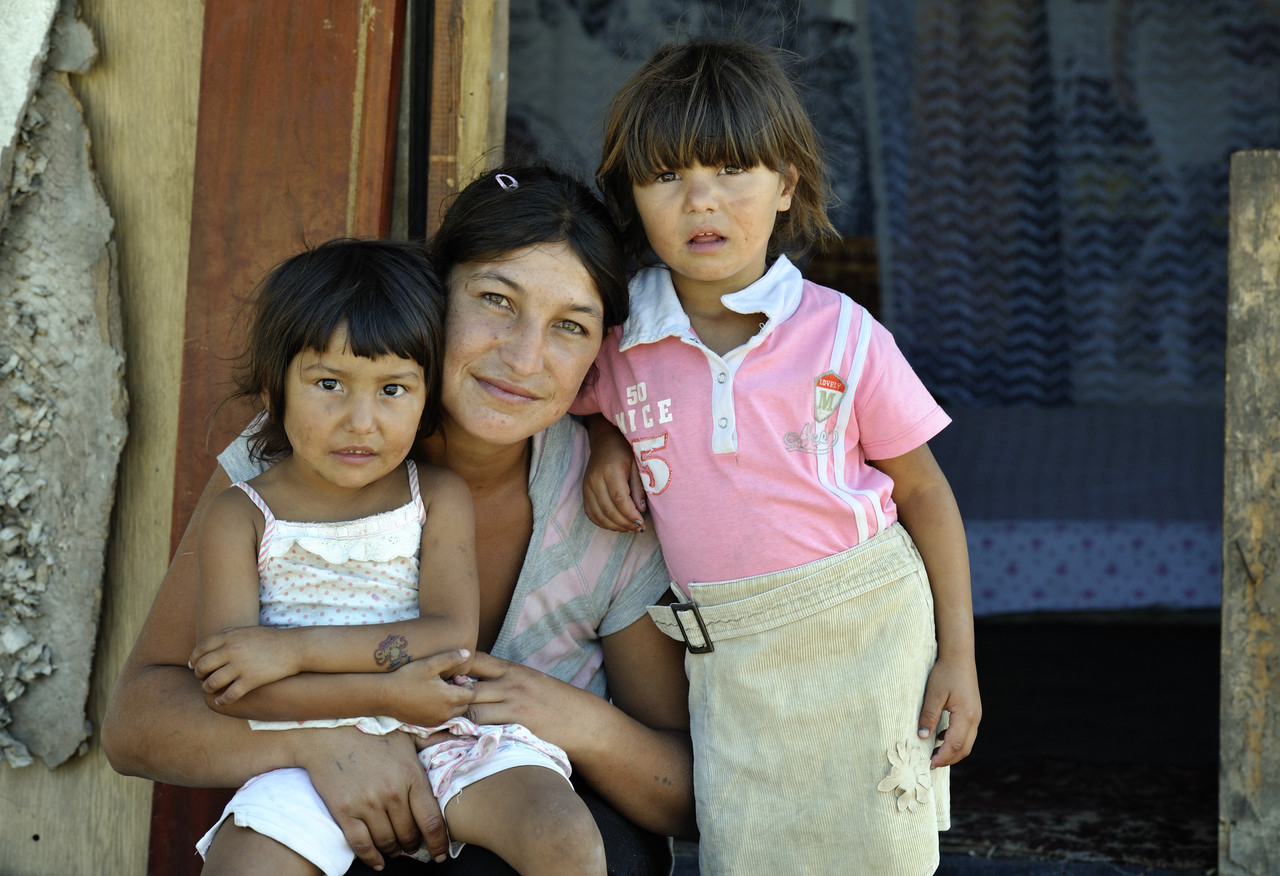
In Palilula I also found Vita Stankovic and Sofija Arbanac and their two daughters, a family I had photographed with their eviction letter back in Belvil.
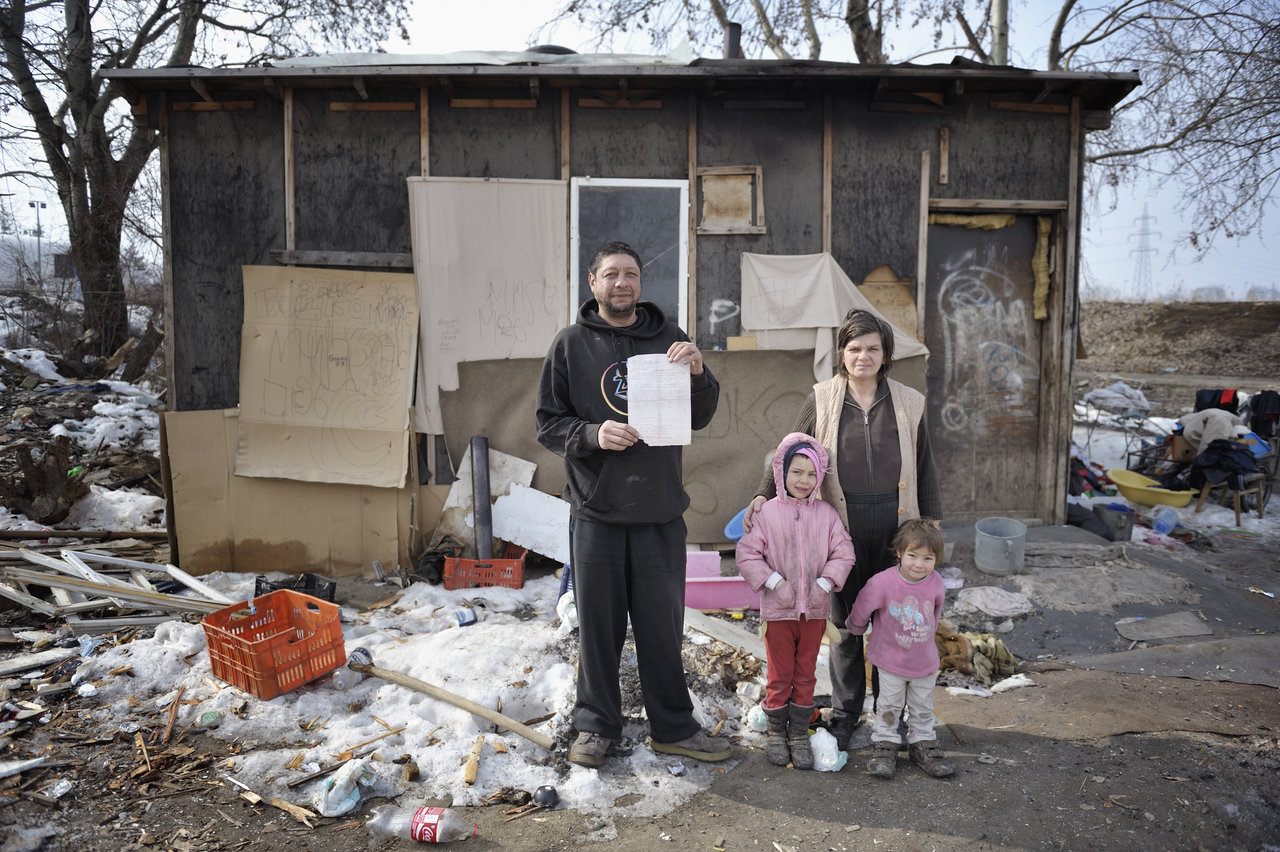
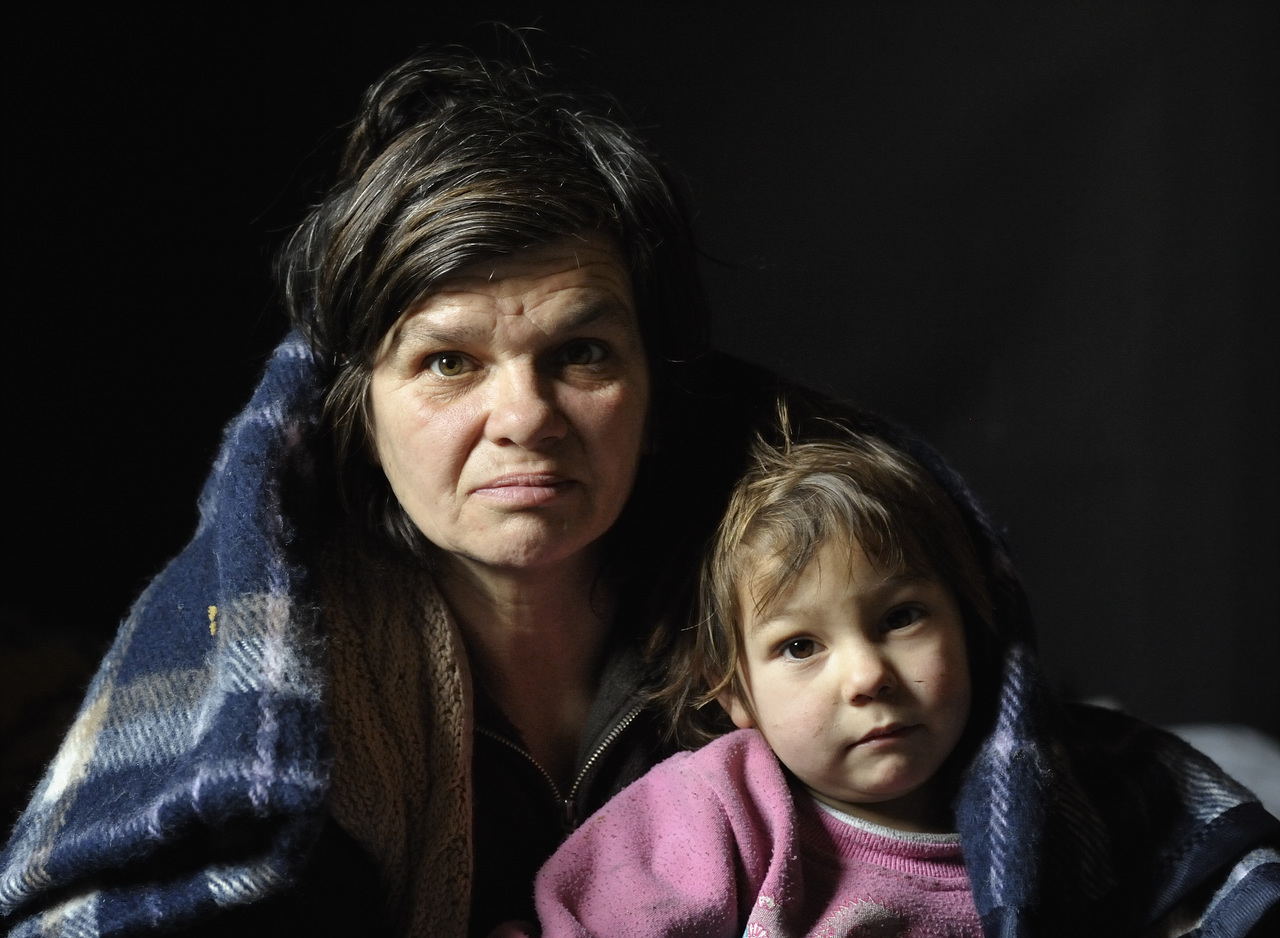
They’d initially been relocated in one of the metal containers, but had been expelled because Vita allegedly had a habit of getting in fights with his neighbors. Life for the Roma in Palilula was pretty rough, their makeshift dwellings surrounded by the inevitable but unsightly detritus of artisan recycling. Sofija told me she survives by scavenging for bread in dumpsters, then cleaning off the mold and reselling it. I gave her a print from the earlier visit, though I wished I could give her a lot more.
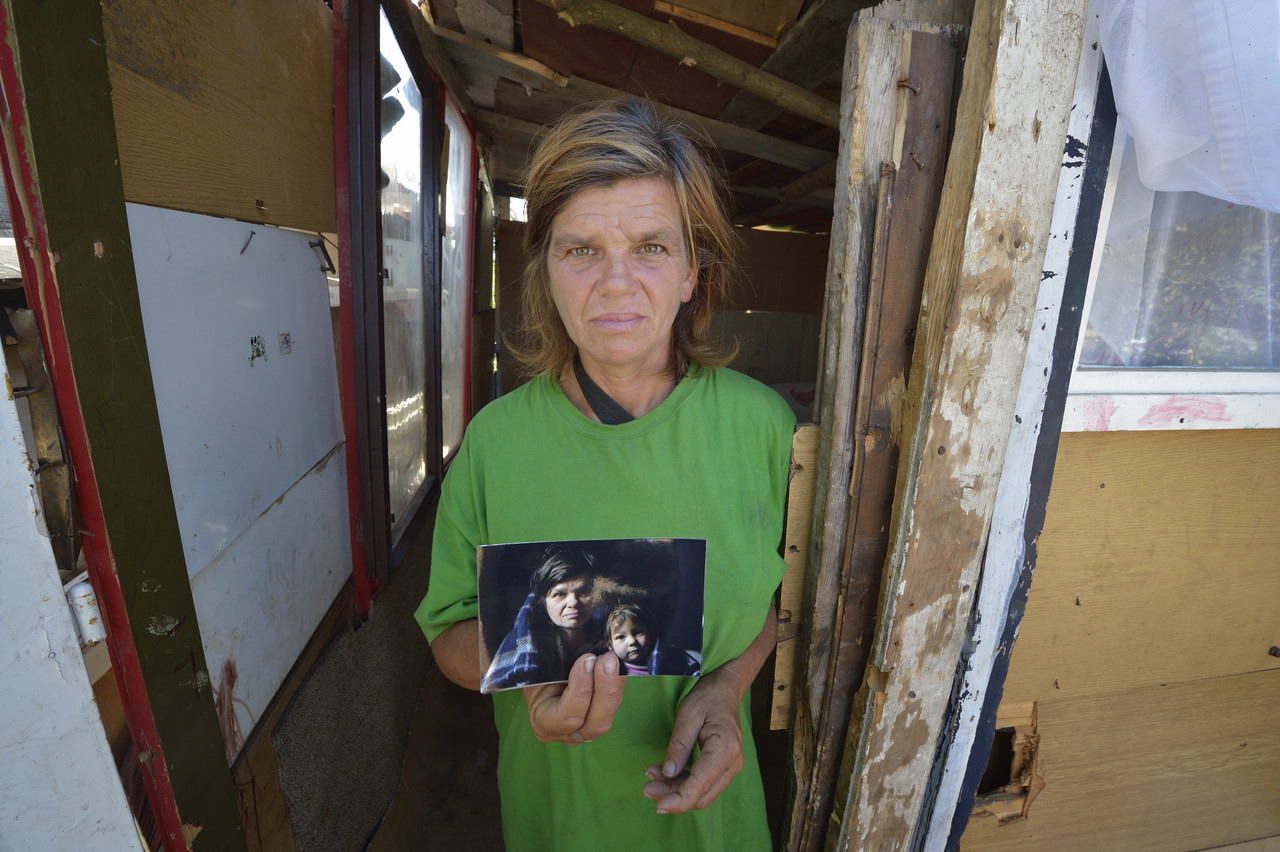
As is the case throughout Europe, anti-Roma violence is on the rise in Serbia. Within a few days of their eviction from Belvil, several Roma in another container settlement were attacked by a group of 15 to 20 masked men who shouted racist slogans, including “Serbia for Serbs” and “Roma out of Serbia.” They drew a swastika on one of the metal containers where the Roma were living, a cruel reminder of the several hundred thousand Roma who were killed by the Nazis and their allies between 1933 and 1945. (In 2012, the Germans finally dedicated a monument in Berlin to the murdered Roma. That dedication came almost seven decades after the end of World War II and years after the dedication of memorials to Jews and homosexuals murdered by the Nazis.)
From Serbia I headed to Macedonia. I had tried to communicate via email ahead of time with a woman activist in Suto Orizari, a suburb of Skopje that forms the largest Roma settlement in Europe. She’d been recommended to me by another journalist, but she hadn’t answered my emails, so I was planning on trying to find her once I arrived. But first I spent a couple of days with Lazo Tancev, a United Methodist pastor who graciously introduced me to some Methodists in Suto Orizari, including Sadedin Husein, a 63-year old man who earns a living scavenging for plastic bottles in garbage dumpsters around Skopje. I interviewed him at length and spent hours following him as he worked the streets.
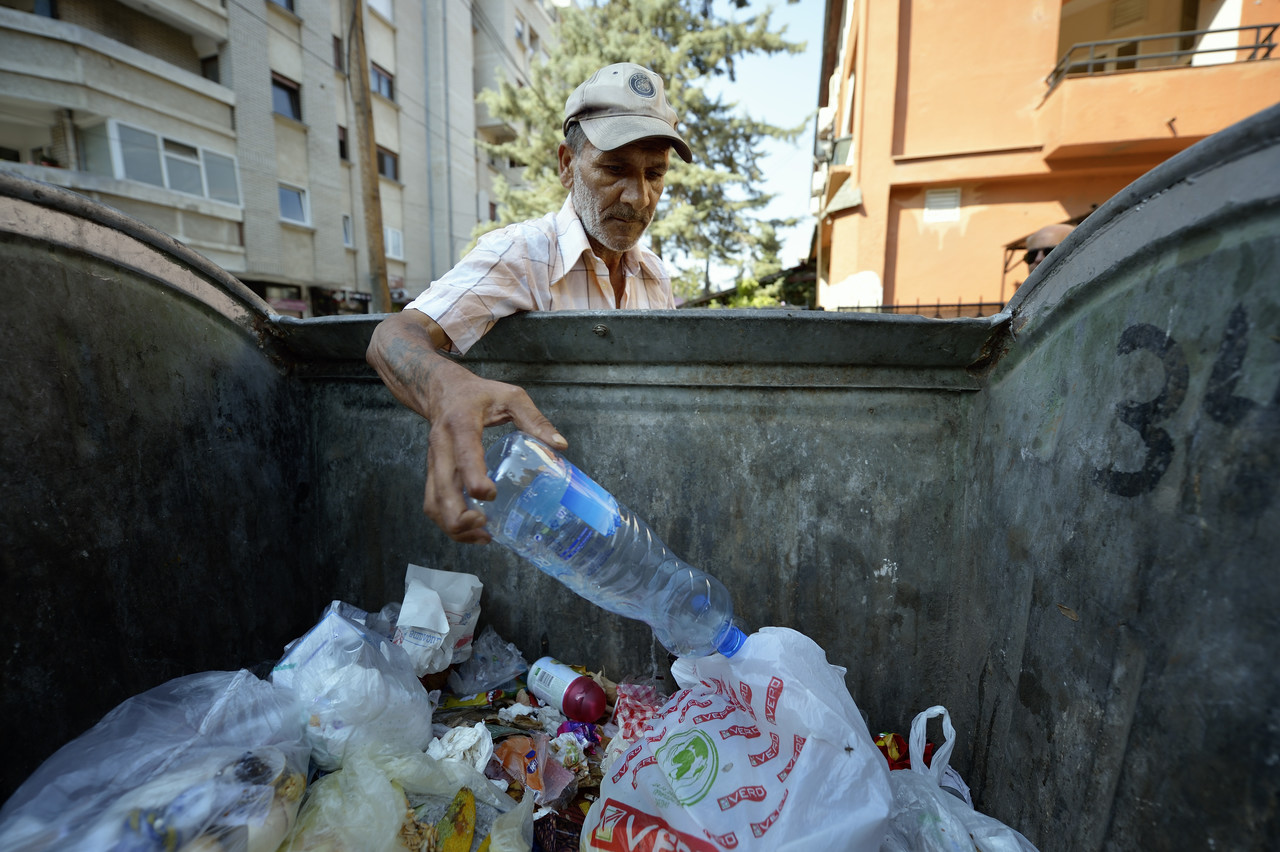
While accompanying Sadedin in his morning tour of Skopje’s dumpsters, we encountered a woman standing at a bus stop who inquired of Sadedin if I was bothering him, and if I had his permission to be taking his photo. (Lazo, the pastor, was translating this for me.) I was a little put off by the nosy woman, and introduced myself, and she said, “Oh, we’ve been waiting for you.” It was Ljatife Sikovska, the woman I’d been trying to contact. Email wasn’t her strong suit, as I discovered, but she turned out to be a fascinating guide into Roma life. I arranged to meet her the next day, and then spent a day and a half with her, most of that time walking around Suto Orizari, visiting other Roma in their homes. Ljatife’s work as a Roma advocate–she directs a Roma women’s organization called Ambrela–often involves helping people get birth certificates and other identification documents. Without those papers, they might as well not exist, and their children can’t get into school or get medical care. My story on the Roma in Macedonia features a lengthy interiew with her, as well as insight from a variety of other people she and Lazo introduced me to in Suto Orizari, especially some young people who talked about the challenges of changing how the Roma see themselves and are seen by others. It was their hospitality and help that literally opened doors for me into the homes and lives of Macedonia’s Roma community.
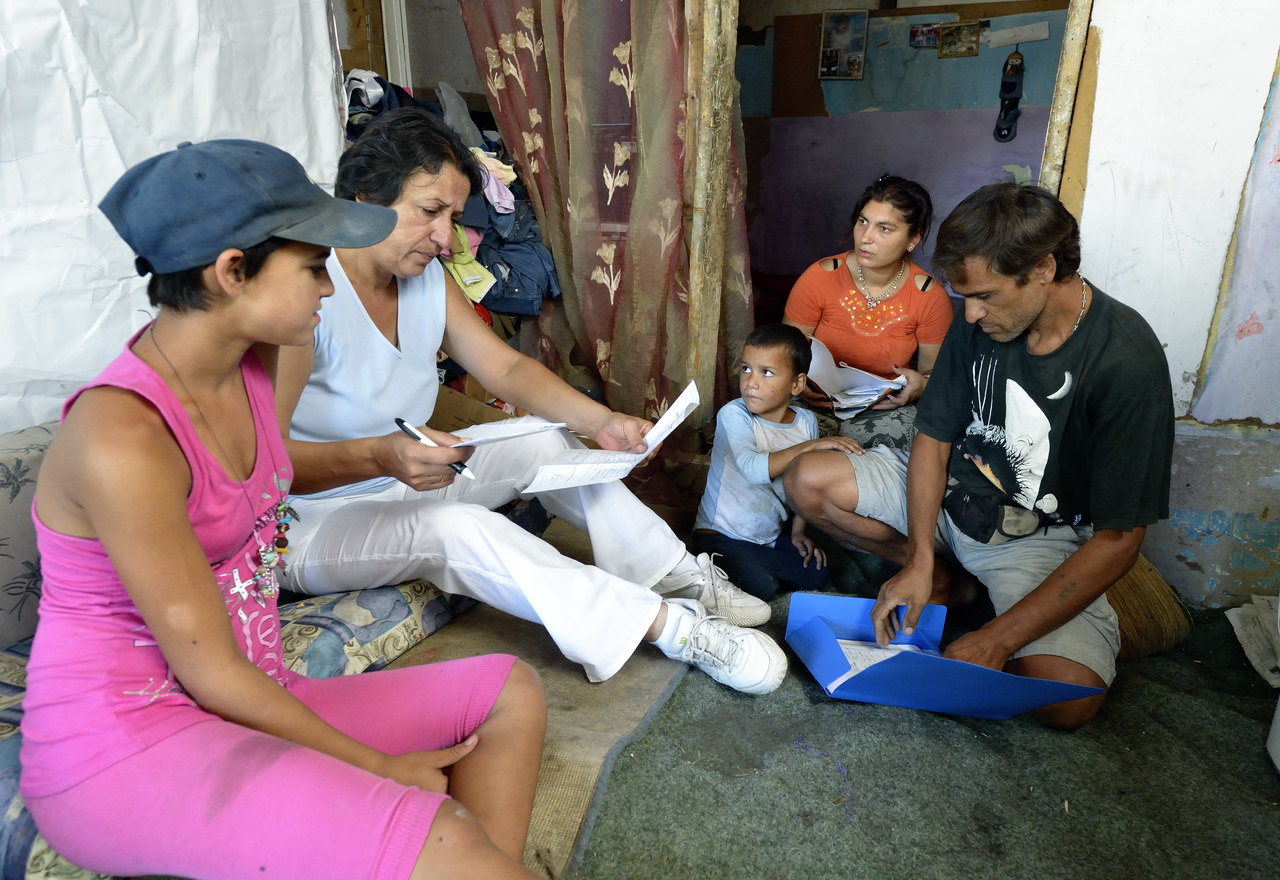
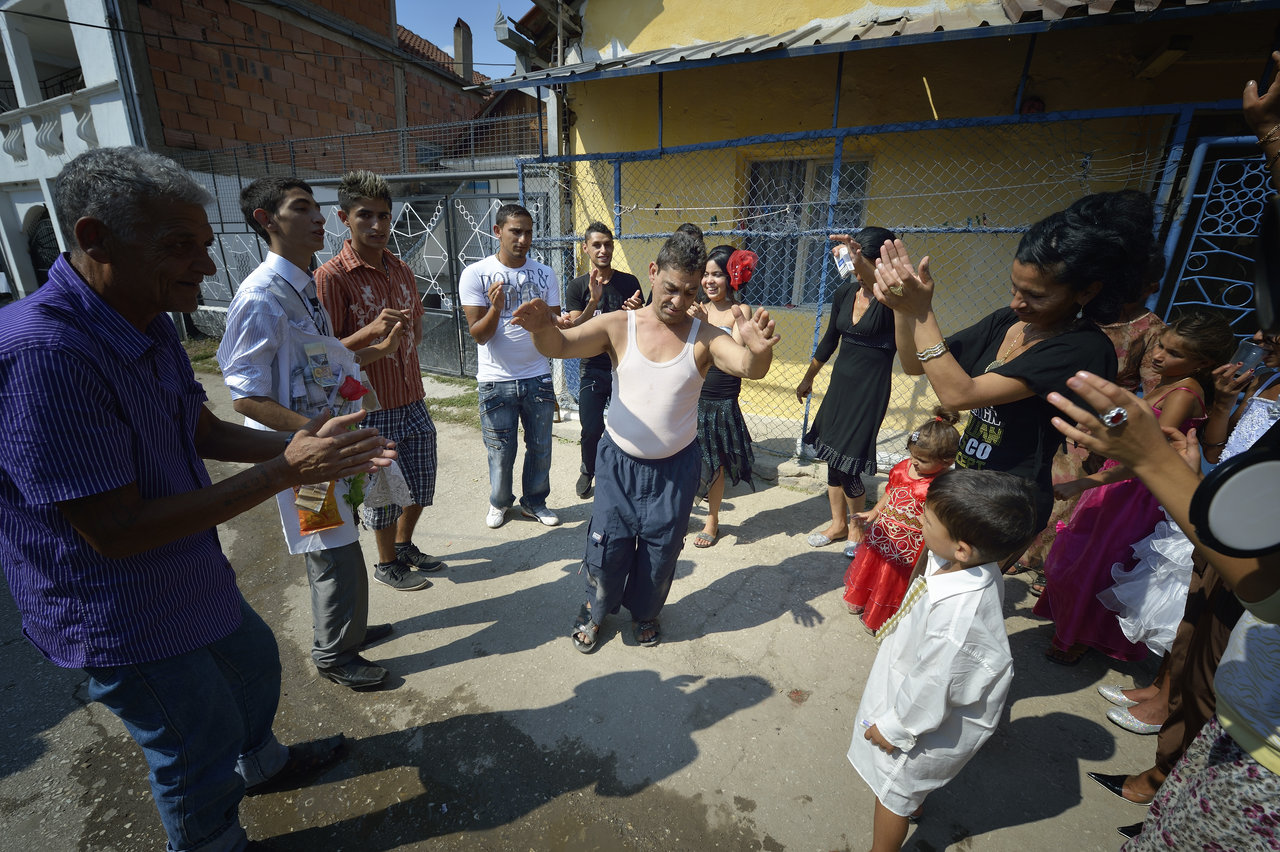
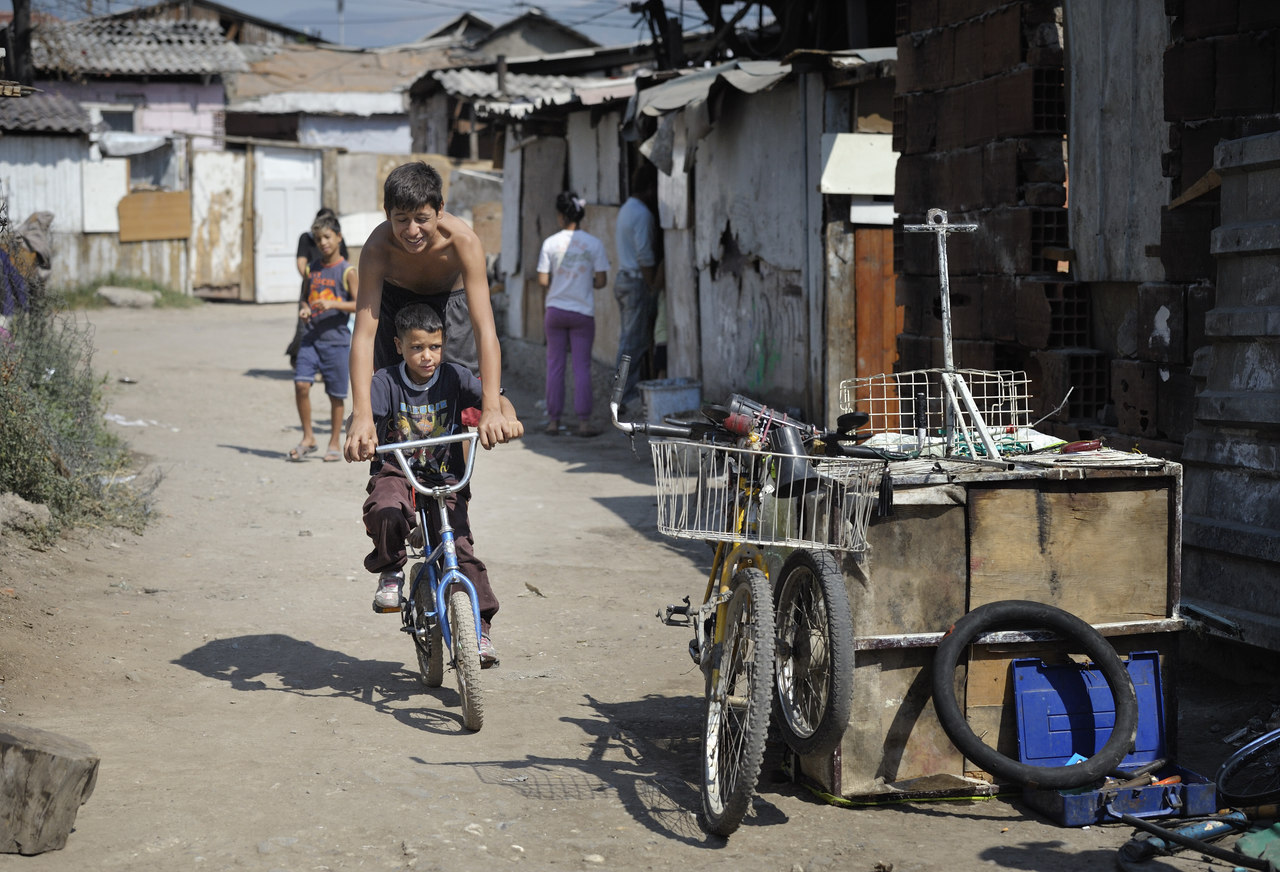
From Macedonia, i spent a day riding buses through the mountains to get to Ruse, a city along the Danube river in northern Bulgaria where Daniel Topalski, another United Methodist pastor, spent three days driving me around Bulgaria, visiting Roma communities in a variety of settings.
Bulgaria is a fascinating place to look at Roma assimilation today. It was the dream of the Communists to abolish racial differences in favor of a classless society, and just about every Roma I interviewed in the Balkans looked back fondly at Communist rule, remembering how they’d had employment and their kids had to go to school. Yet the Communists had also ordered the “Great Halt” that put an end to the wandering Gypsy caravans and forced the travelers to settle down, an experiment of social engineering with disastrous consequences. And in trying to manufacture racial anonymity, the Communists changed many Roma names to remove evidence of ethnicity. Yet the Roma had already launched their own efforts at “self-misrepresentation” (to use the phrase of Isabel Fonseca in her wonderful book Bury me standing: The Gypsies and their journey), denying that they were Roma and instead calling themselves “Turkish-speaking Bulgarians” and a variety of other terms. Most of the places Daniel took me were laboratories of that identity crisis, but with mixed results. In Staro Oriahovo, where I met with several people in a local Methodist church, the pastor slipped, at one point admitting that residents of the “Romanian-speaking minority” community were in reality Gypsies. “No we’re not!” shouted the congregation in unison.
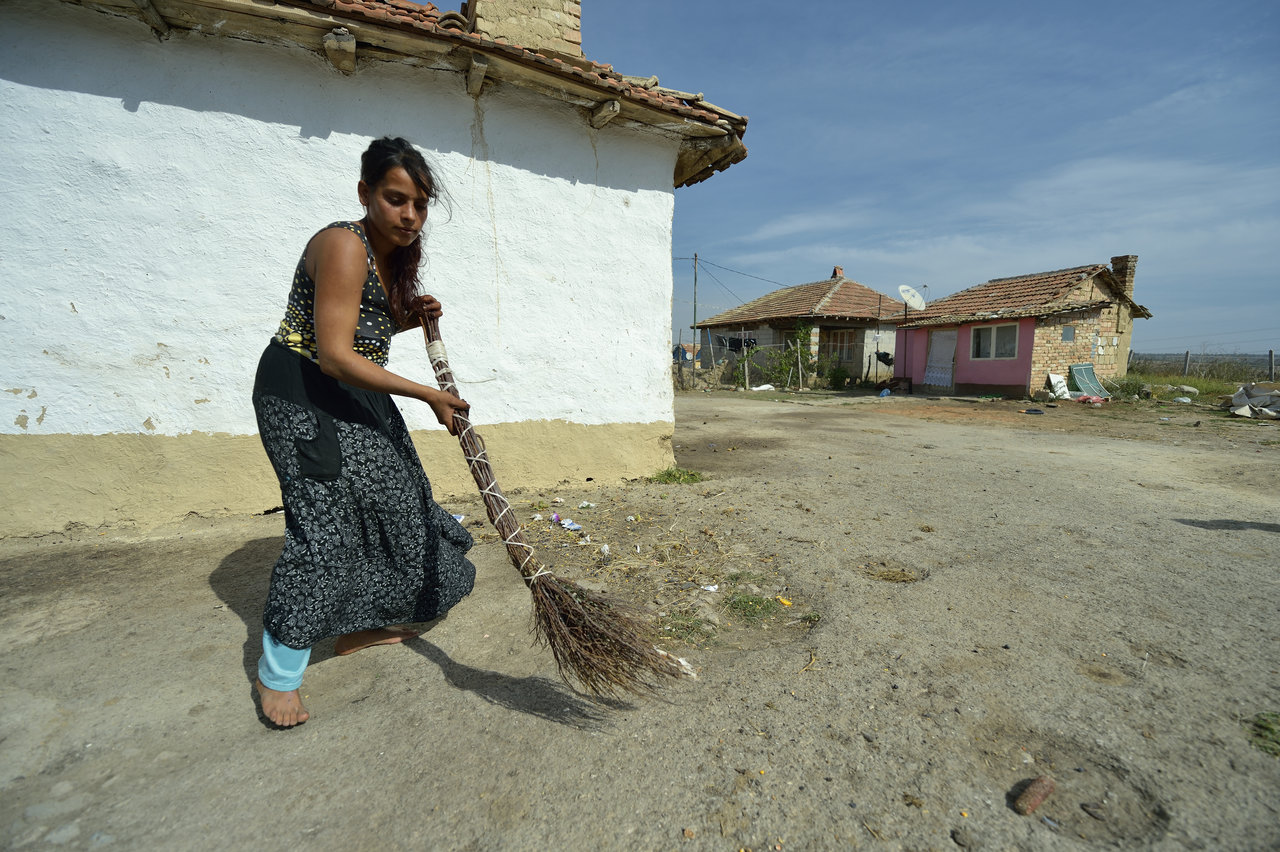
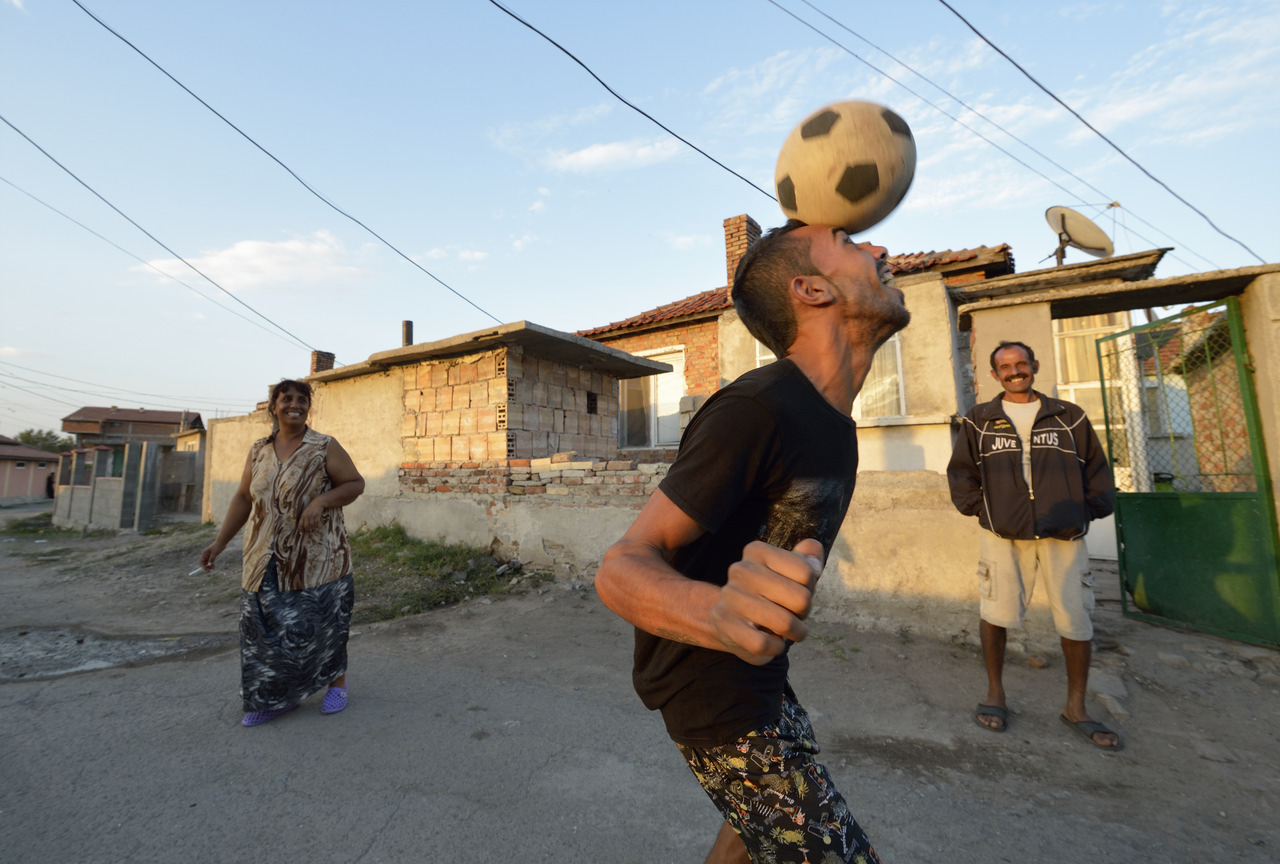
In Varna, I saw evidence of the same anti-Roma sentiment as elsewhere in Europe, but encouragement from the region’s rightist faux populists has lent it a particularly nasty edge. In the next image, Feride Ramadan Mehmed and her husband Mehmed hold their children Birdzhan, 1, and Erdzhan, 3, in their house in the Maxsuda neighborhood. They are Turkish-speaking Roma, and were violently driven out of one neighborhood by racist gangs. They took refuge in a church for a year before finding this small house to rent.
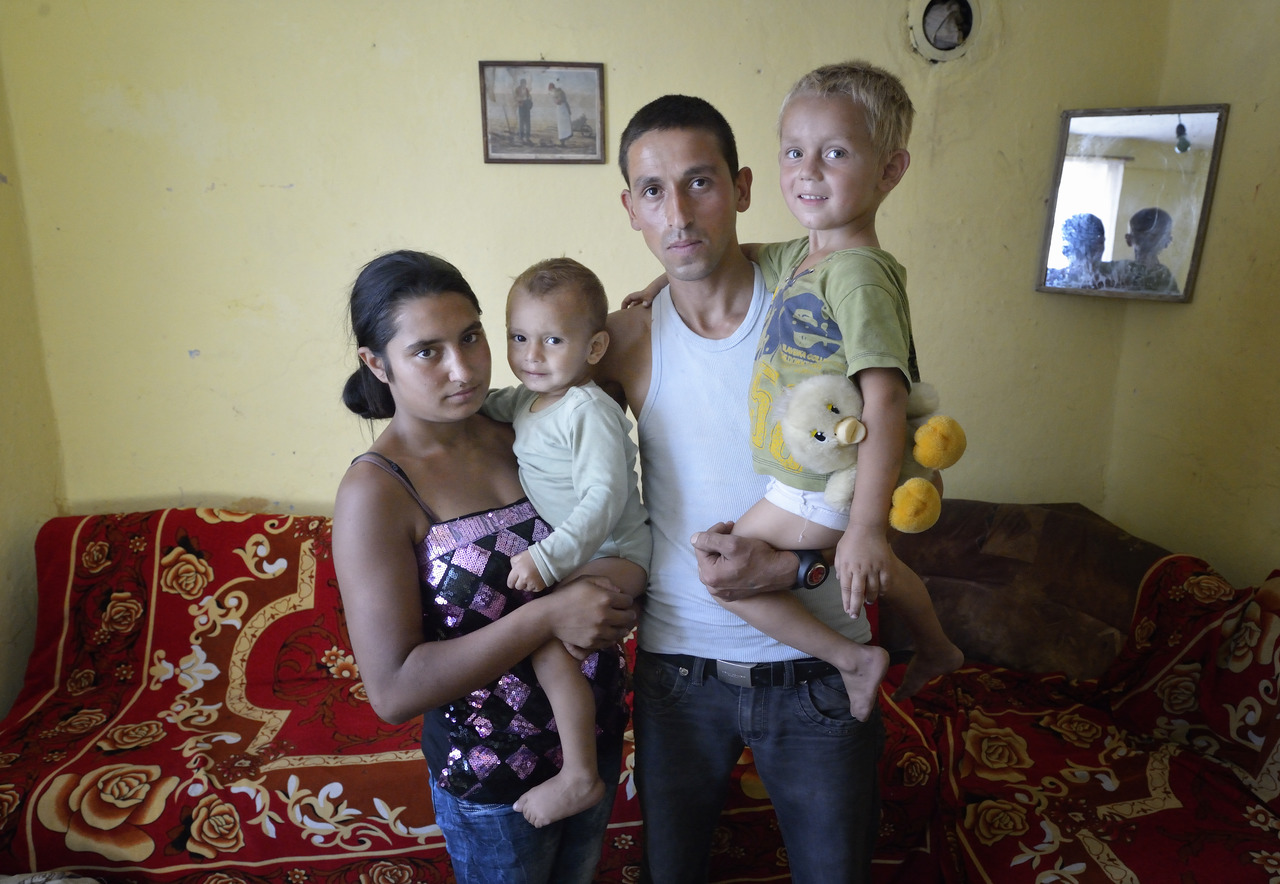
I was told by Demir Sandev, a 57-year old Turkish-speaking Roma man who recycles scrap in Varna, that pretending to be someone else does little good. “Sometimes people claim they are Bulgarians simply because that’s the country where they live. But it’s obvious, you can see that some people are Roma. I prefer to say openly that I am Roma, because they’re going to beat me anyway,” Demir told me
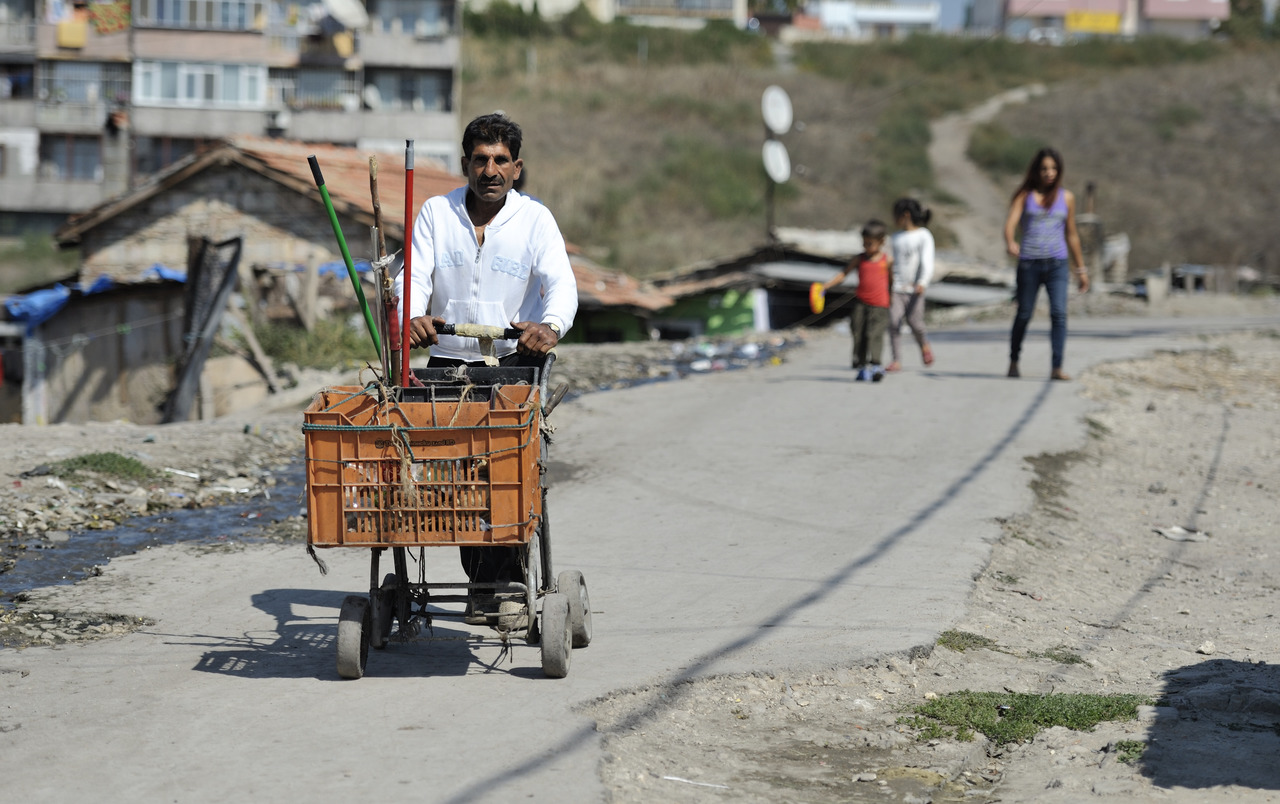
I’m thankful to the Roma of Bulgaria and elsewhere, whatever they choose to call themselves, for opening their lives and homes to me. Without their assistance, I couldn’t have come close to beginning to understand anything about their complicated lives, history and communities. Without their hospitality, I would have been one more gadje standing outside looking in, and the perspective of viewing a poor community from the outside is markedly different from seeing it from the inside. Looking at the Roma from afar often affords a view that gets hung up on the trappings of poverty–the garbage and falling-down shacks–while listening to the Roma inside those communities one hears a narrative of survival and strength.
In one town in Bulgaria the Roma in a church were organizing to stop the trafficking of young Roma girls to western Europe. In another the church had started a feeding program for the hungry children in their midst, utilizing their own meager resources to buy and prepare food. It was a similar resolve I found among youth in Macedonia’s Suto Orizari, determined that they could overcome all the cultural obstacles that lay between them and their future. Or the quiet courage of families in Serbia, expelled from one place but struggling to raise their children in another, providing love in the middle of a society that has relegated them, in the best of cases, to a metal box on the outskirts of the city.
